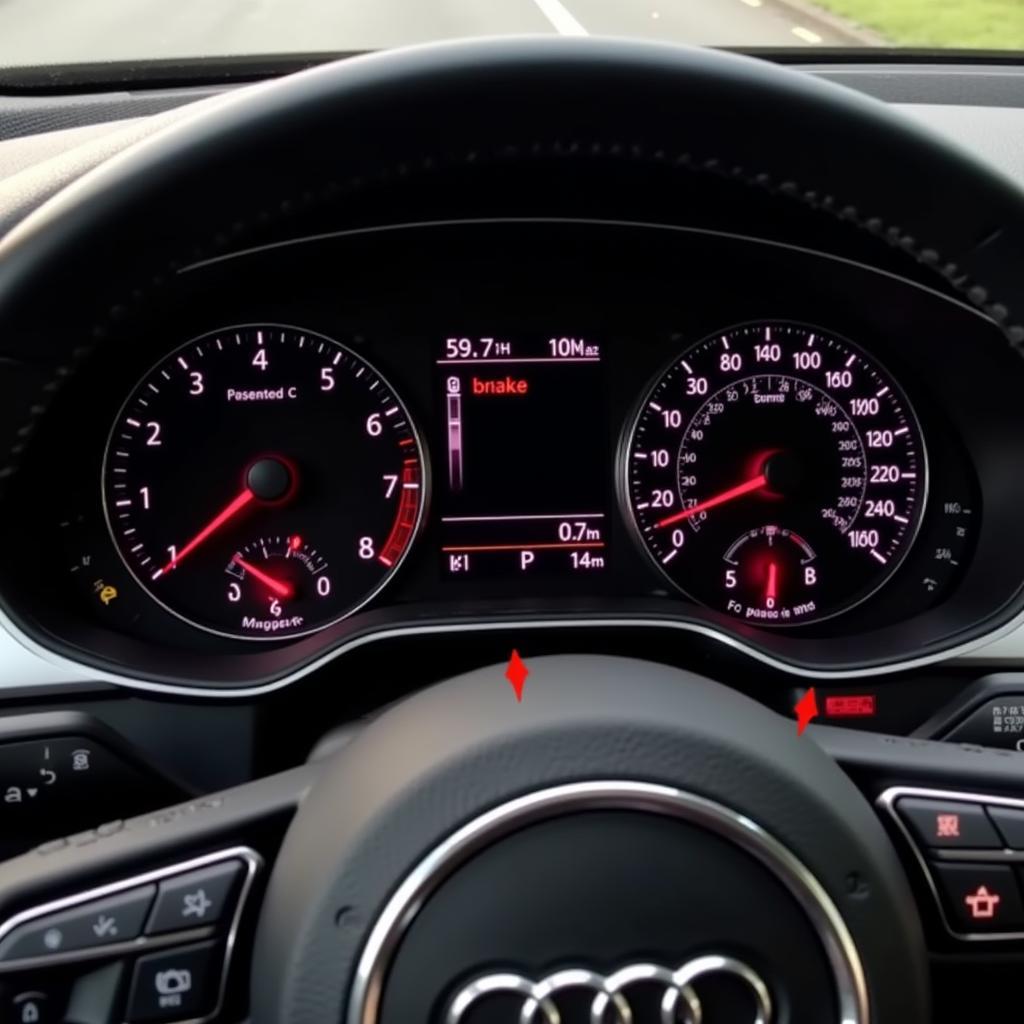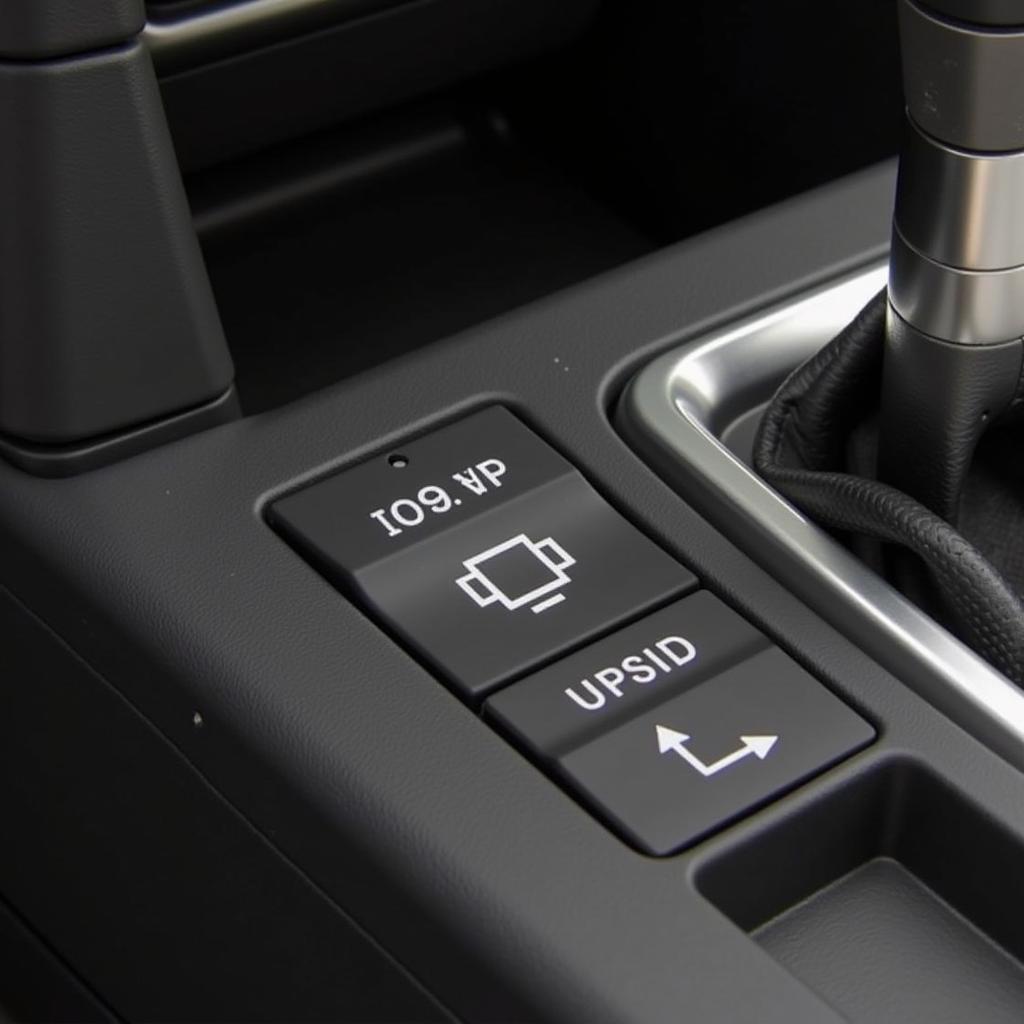If you’re driving a 2008 Honda Pilot and the brake light warning on your dashboard lights up, it’s important not to ignore it. This warning signal indicates a potential issue with your braking system that needs immediate attention to ensure your safety and that of your passengers. This article will guide you through the common causes of the 2008 Honda Pilot brake light warning and provide practical solutions to help you troubleshoot and potentially fix the problem.
Common Causes of a 2008 Honda Pilot Brake Light Warning
Several factors can trigger the brake light warning on your 2008 Honda Pilot. Here are the most common culprits:
1. Burnt-Out Brake Light Bulbs
One of the most frequent causes is a simple one – a burnt-out brake light bulb. Your Honda Pilot, like most vehicles, has multiple brake lights, and if one goes out, the system can trigger the warning light.
Solution: Inspect all your brake lights, including the high mount stop lamp, for any burnt-out bulbs. Replace any that aren’t functioning properly.
2. Faulty Brake Light Switch
The brake light switch is a small component located behind your brake pedal. It’s responsible for activating your brake lights when you press the pedal. Over time, this switch can wear out or malfunction, leading to inconsistent brake light behavior and triggering the warning.
Solution: If your brake light bulbs are in working order, the next step is to examine the brake light switch. A mechanic or someone with mechanical skills can test and replace this switch if necessary.
3. Low Brake Fluid Level
Your Honda Pilot relies on brake fluid to transmit force from the brake pedal to the wheels, allowing you to slow down and stop. If the brake fluid level drops significantly, it usually indicates a leak in the system, and the brake light warning will illuminate to alert you.
Solution: Check your brake fluid level. If it’s low, add the recommended brake fluid for your Honda Pilot. However, it’s crucial to investigate the cause of the leak and have it repaired by a qualified mechanic to prevent further issues.
4. Worn Brake Pads
Brake pads naturally wear down over time due to friction generated during braking. If your brake pads are excessively worn, a sensor within the brake system will activate the brake light warning on your dashboard.
Solution: Have your brake pads inspected by a mechanic. If they are nearing the end of their lifespan, it’s time for a replacement. Don’t delay this as driving with worn brake pads can significantly compromise your braking ability.
5. Issues with the ABS System
While less common, a problem with your Honda Pilot’s Anti-lock Braking System (ABS) can also trigger the brake light warning. The ABS system is crucial for preventing wheel lock-up during hard braking and maintaining steering control. If the ABS module malfunctions or sensors experience issues, it can disrupt the overall braking system and trigger the warning light.
Solution: Diagnosing and repairing ABS issues require specialized equipment and expertise. If you suspect a problem with your ABS system, it’s best to consult a qualified mechanic or take your vehicle to a trusted repair shop specializing in Honda vehicles.
What to Do When Your 2008 Honda Pilot Brake Light Warning Comes On
- Don’t Panic: A brake light warning doesn’t necessarily mean your brakes are about to fail completely. However, it does signify an issue that needs your prompt attention.
- Check Your Surroundings: Safely pull over to the side of the road or a safe location as soon as possible.
- Inspect Your Brake Lights: Visually check if all your brake lights are functioning. If you’re alone, you can reverse close to a wall or window and use the reflection to observe your brake lights.
- Check Your Brake Fluid: If possible and safe to do so, carefully inspect the brake fluid level in the reservoir under the hood.
- Proceed with Caution (If Necessary): If you must drive a short distance to a mechanic, exercise extreme caution. Allow extra braking distance and be prepared for potential changes in brake responsiveness.
Conclusion
Addressing a 2008 Honda Pilot brake light warning promptly is crucial for maintaining your safety on the road. While a simple burnt-out bulb can be an easy fix, more complex issues like brake fluid leaks or ABS malfunctions require professional attention. Remember, your brakes are critical for safe driving – never hesitate to seek expert help to diagnose and resolve any brake-related problems with your Honda Pilot.


